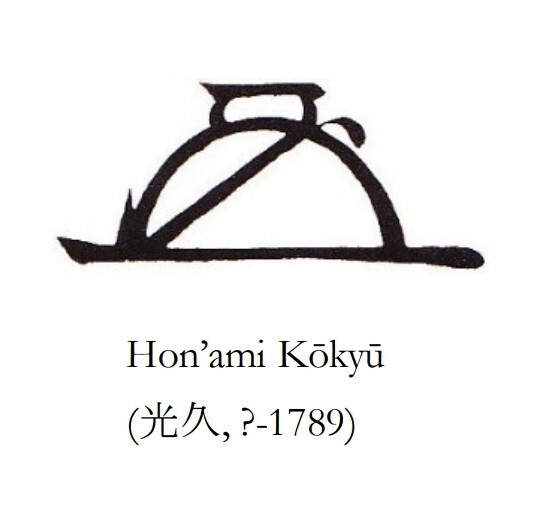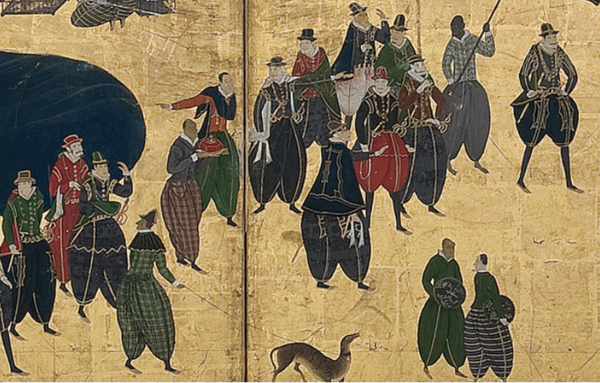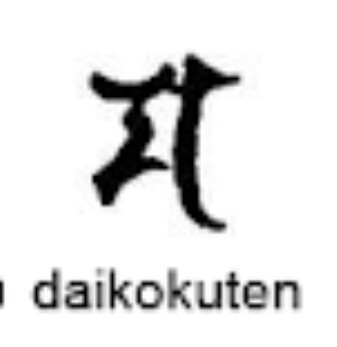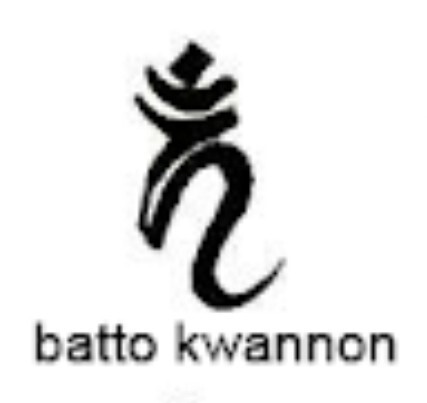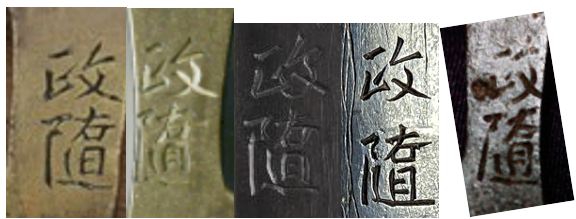-
Posts
1,102 -
Joined
-
Last visited
-
Days Won
5
Content Type
Profiles
Forums
Events
Store
Downloads
Gallery
Everything posted by DirkO
-
Thank you for all the hard work you put in, Brian (and the moderators)! The points you make are valid ones. If these guidelines were adhered more, then this forum would be a lot more pleasant and informative - whereas now it takes too long to prove someone wrong, so people just don't bother with doing it anymore. This in return fuels the ill-informed to continue their ways. But let's hope we can turn that around!
-
It's a mixed bag. Some things were inspired by Higo and Heianjo, but that's as far as I'd go on this one. You see hira zogan, suemon zogan,... The workmanship, quality of chinchu,... seem to point to late 19th century. From a design perspective, this is a very crowded and busy design, far from Higo mainline. There's no resting points, no negative spaces. An interesting exercise in different styles.
-
Usually holes like that symbolize a worm eaten effect, but those aren't perfectly round. There are also exactly 2 per leaf, which can't be a coincidence.
-
Gingko leaves after rain?
-
I actually was playing with the idea to have a Meoto Iwa tsuba commissioned some years back, but in the end decided on focussing more on Sarutahiko. Rope changing pics:
-
-
Ida Koendo has a daisho pair up for sale at 22,000,000 yen - roughly 170K USD. The below one, I'm sure, sold.
-
Hi Jiri and welcome! If I see correctly, your tsuba is signed Jakushi. You can Google Jakushi tsuba, to see how yours compare both for quality and price.
-
For a Japanese collector the more typical an item is, the higher it's ranked and the more desirable it is. Hence the cautious papering. Obviously exceptions will be made for special pieces. So yes, very typical and easy to recognize pieces will get better attributions. The odd human error will occur in every line of business, I think there's an article somewhere where they calculate the number of pieces in a shinsa session, it's daunting. If you feel confident enough to buy an unpapered piece, by all means do. It will save you money. However, when it comes to selling, you'll be hard pressed to make that same convincing case to a potential buyer who might not have your level of knowledge or confidence in the piece.
-
According to the seller it's a direct Hikozo. However, no recent papers. Possibly they tried shinsa and it papered to Hirata or even Hirata den. And that makes all the difference... It's not because something was in a collection or a museum under a certain header, that it will pass shinsa as such.
-
The fact that the design goes over the mimi, the carefull nanako to highlight the seppa-dai and the hitsu-ana and the pleasing and original lay-out of the waves and boats,.... This all makes for a very nice tsuba! Sadly no entry in Wakayama.
-
Mr Fred Geyer did a whole write up on this specific design in the 2nd KTK book. Well worth the read!
-
-
The dog is one of those typical Spanish greyhounds. This fact, together with the clothing style, hat, ... would make me think Spanish rather than Dutch.
-
-
Here's yours in line with some papered examples - it seems to compare favorably - which obviously isn't a guarantee as you well know
-
My guess would be Mino Goto, very nice example, congrats!
-
Rookie mistake! because it's not in columns my Western brain misled me. Thanks for putting me straight. Now to research that name Fukuda Eisai.
-
When I was going through an old tsuba collectors book about Nobuie meetings (as one does) , I found a few very nicely made sketches of some deities, which had this annotation: I think it's 東齊永田福 - Tosai Nagata Fuku? The Nagata might link it to the Murakami school somehow, but that's just guess work on my behalf. Any insights would be appreciated.
-
hyotan namazu theme, nice! One of my favourite.
-
Mine arrived safe and sound. Decided to apply some felt foots to them. For those still on the fence about these they really look great! Easy and quick seller, well packaged,... What's not to like? Yes I admit, those are IKEA Billy!
-
魚子地 nanako ji 鋤出高彫 sukidashi taka-bori
-
There's actually a number of smiths who signed 貞次. It's a nice, very good sized piece. My guess would be Momoyama or even later. It has a elongated kissaki, high shinogi, some masame and shows attractive activities - which narrows it down a bit, but not by much. I think your best bet would be Massimo Rossi in Rome to have an in hand appraisal. He can also tell you about a possible polish. I think it would look stunning, but could be I'm overlooking things not shown in the pictures. Sorry I can't be of more help.
-

Translation assistance and identification
DirkO replied to Dconekin's topic in Translation Assistance
Naomichi was one of the names the shodai Kanemichi signed with, so I included them.






